The Best Trout Baits for Rivers: Catch More with My 9 Top Picks
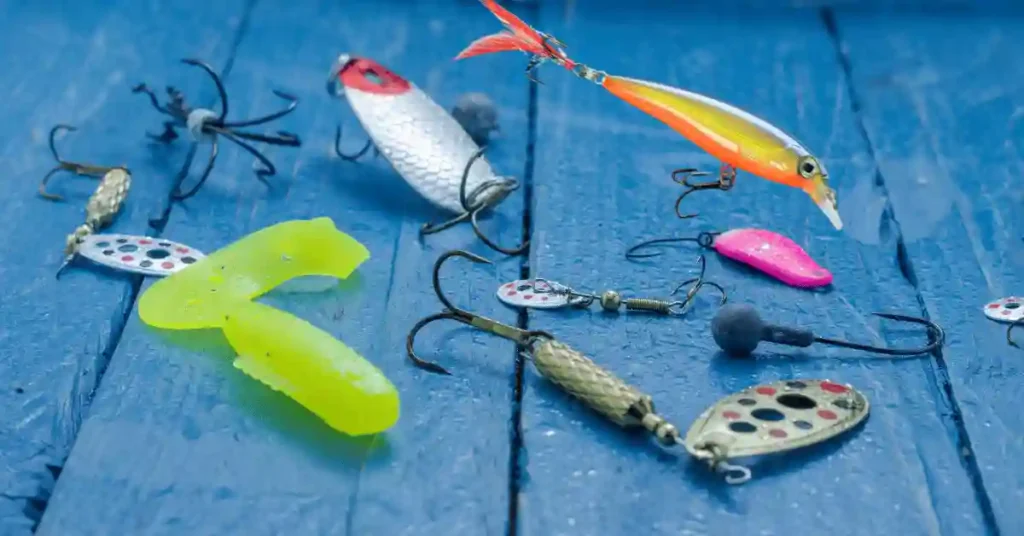
For as long as I can remember, I’ve had an undeniable love for trout fishing. Nothing beats the exhilaration of feeling the tug on your line and reeling in a beautiful, vibrant trout.
The key to successful trout fishing, however, is not just in the technique but also in the bait. After lots of research and trying them out myself, I’ve made a list of the top nine baits that really work for getting trout to bite.
In this article, I will share with you my top 9 BEST TROUT BAITS that will increase your chances of catching these elusive creatures.
Please note that we may earn commissions when you click our links and make purchases. However, this is outside our reviews and comparisons. We strive to maintain fairness and balance to assist you in making the best choice.
Additionally, as an Amazon Associate, we earn from qualifying purchases.
9 Top Picks for the Best Trout Baits for Rivers
The following are the nine best trout baits for the river: I hope you will love them.
Bait No 1. The Ever-Reliable Worms
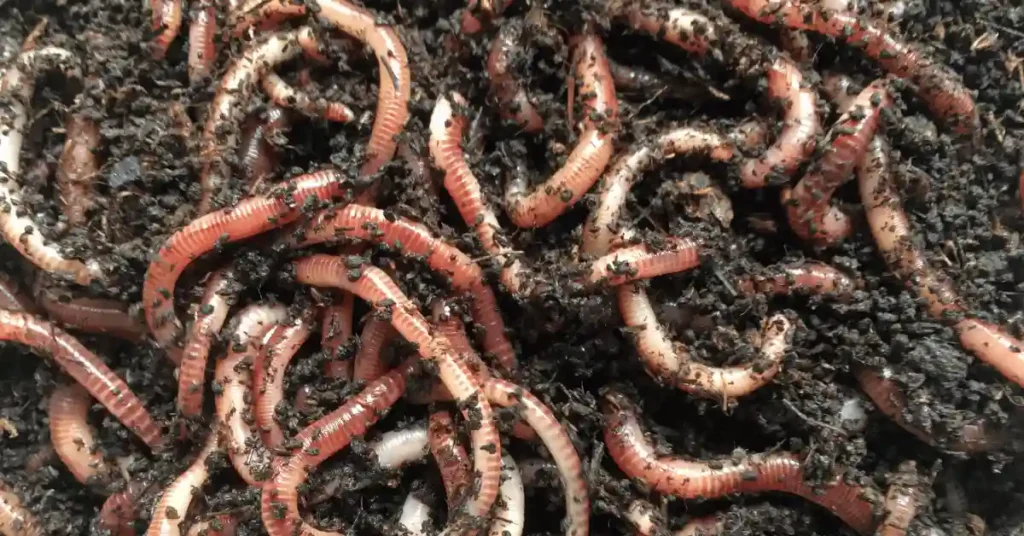
If there’s one thing I’ve learned over the years, it’s that you can’t go wrong with worms as trout bait. There’s just something irresistible about a plump, wriggling worm that gets a trout’s attention every time.
Trust me, I’ve had countless successful fishing trips using this classic bait.
The great thing about worms is their versatility. From nightcrawlers and red worms to mealworms, you can choose based on what’s readily available or the size of the trout you’re targeting.
Nightcrawlers, with their larger size, are particularly appealing to big trout. On the other hand, the smaller red worms and mealworms are perfect for enticing trout of all sizes.
The key to using worms effectively is to keep them fresh and lively. Trout are instinctively drawn to the scent and movement of live worms. I always make sure to keep my bait container in a cool, shaded spot to maintain its vitality.
Remember, the way you present your worm on the hook can make a big difference. You want it to appear as natural as possible, mimicking a worm that a trout would find in its natural environment.
I typically thread the worm onto the hook, leaving a bit of the worm dangling to create enticing movement.
Worms have been my go-to bait for trout fishing for years, and I’m confident they’ll work wonders for you too.
Best Worms:
- Nightcrawlers
- Red Wigglers
- Earthworms
- Mealworms
- Waxworms
Pros & Cons
Pros:
- Natural bait: Worms serve as effective bait for various fish species.
- Accessibility: Easily obtainable or cultivable, reducing reliance on expensive or scarce bait.
- Versatility: Suitable for diverse fishing techniques like baitcasting, fly fishing, and bottom fishing.
- Longevity: Worms stay on the hook longer compared to artificial baits, increasing chances of a catch.
Cons:
- Fragility: Worms require delicate handling to keep them alive and intact on the hook.
- Seasonal availability: Availability may fluctuate based on region and season, limiting fishing opportunities.
- Messiness: Handling live worms can be messy, potentially leaving residue on hands and equipment.
- Ethical concerns: Some anglers may question the ethics of using live bait, preferring artificial lures.
Bait No 2. Power Bait Dough
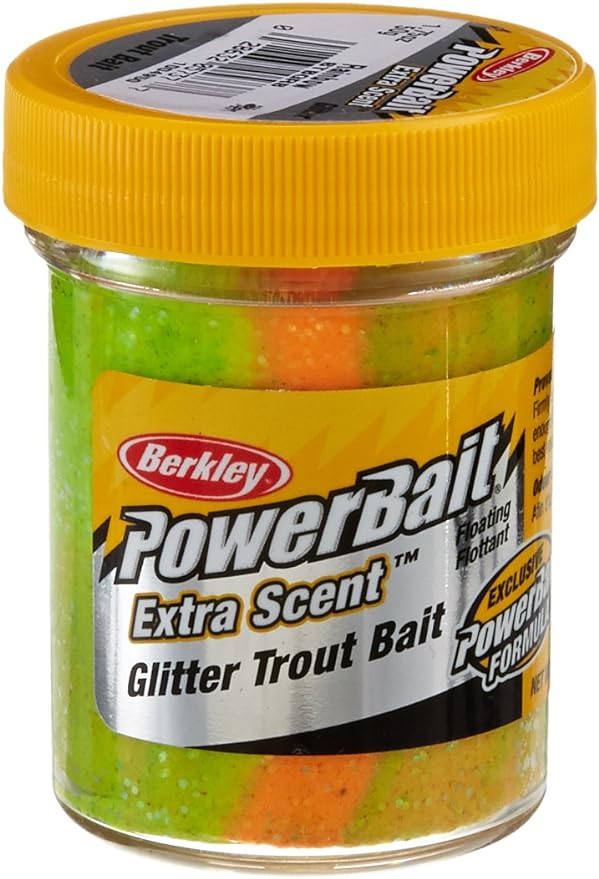
If you ask me about a reliable artificial bait for trout fishing, I’d instantly recommend Power Bait dough. I’ve used it numerous times, and its effectiveness never ceases to amaze me.
What sets Power Bait dough apart is its unique formulation that has been tailor-made to attract trout. The moment a trout tastes it, the flavor impels the fish to hold on longer, giving you more time to set the hook.
But here’s the best part: Power Bait dough is available in a variety of colors and scents, giving you the liberty to mix and match until you find the perfect combination that works for the trout in your area.
I’ve had luck with everything from chartreuse to rainbow and garlic to salmon egg scent. Don’t be afraid to experiment with different options.
Who knows, you might stumble upon a winning combination that trout in your fishing spot simply can’t resist!
Power Bait dough is easy to use, too. Just mold a small piece around your hook so that it covers the entire shank and the hook point.
The dough remains on your hook while casting, giving you a great chance of attracting and catching trout. Trust me, once you give Power Bait dough a try, it’s going to become a regular in your trout fishing arsenal!
How To Rig Power Bait Dough On A Hook
- Take a little Powerbait from the jar.
- Roll the Powerbait into a ball using your hands. Make sure it’s smooth without any gaps or cracks, which can make it come off the hook easily.
- Push the Powerbait ball halfway onto your mainline above your treble hook. Then slide it down onto the hook, making sure it covers the whole hook. Use your fingers to smooth out any wrinkles or cracks.
These hooks are made for Powerbait and similar baits. The spring keeps the bait on the hook, so it won’t come off when you cast or hit the water.
- Now you’re ready to start fishing!
Pros & Cons
Pros:
- Convenient: Easy to use with minimal preparation, ideal for anglers on the go.
- Durable: Stays on the hook well, reducing the need for frequent bait changes.
- Versatile: Available in various colors and scents to attract different fish species.
- Clean: Less messy compared to live bait, keeping hands and gear cleaner during fishing.
Cons:
- Artificial: Some fish may be less responsive to artificial baits like Power Bait Dough.
- Limited versatility: May not be as effective in certain fishing techniques or conditions.
- Storage needs: Requires proper storage to maintain freshness, adding complexity for some anglers.
- Environmental impact: Residual dough in waterways could have ecological consequences.
Bait No 3. Artificial Minnows
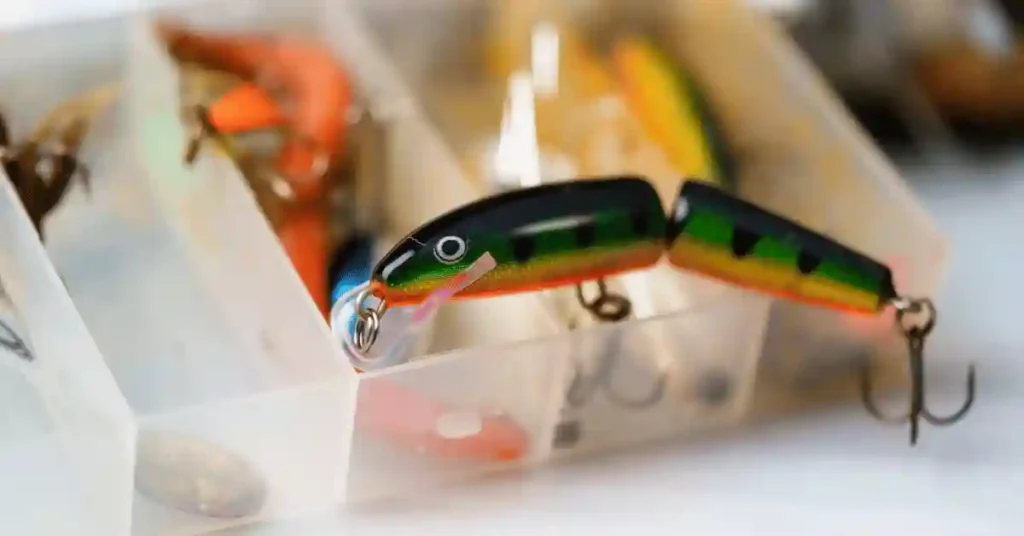
When it comes to mimicking a trout’s natural prey, artificial minnows are one of my favorites. These lures are designed to look and move just like a real minnow, a popular meal for many trout species.
I find them particularly effective when targeting larger trout, as they simulate a hearty, worthwhile meal.
The magic of artificial minnows lies in their realistic swimming action. As you reel them in, their lifelike movement in the water is enough to draw the attention of any nearby trout.
The trick is to choose minnows that have the most authentic motion, which really brings out the predatory instincts of trout.
I have a box full of these artificial minnows in various colors and sizes, letting me switch things up as the situation demands. Y
ou never know what might entice the trout on a given day, so it’s always good to have options at your disposal.
Next time you head out for trout fishing, make sure you have some artificial minnows in your tackle box. I bet you will be surprised at how effective they can be!
Best Artificial Minnows:
- Rapala Original Floating Minnow
- Storm WildEye Swim Shad
- YUM Money Minnow
- Berkley Gulp! Alive! Minnow
- Strike King Shadalicious
Pros & Cons
Pros:
- Realistic: Artificial minnows mimic the appearance and movement of real baitfish, attracting predatory fish.
- Durable: Made from durable materials, artificial minnows can withstand multiple uses without deterioration.
- Variety: Available in various sizes, colors, and styles, providing options for different fishing conditions and target species.
- Versatile: Can be used in a variety of fishing techniques, including casting, trolling, and jigging.
Cons:
- Limited realism: Despite advancements, artificial minnows may not perfectly replicate the behavior of live baitfish.
- Cost: Quality artificial minnows can be more expensive upfront than live bait or other artificial lures.
- Skill required: Effective presentation and retrieval techniques are necessary to maximize the success of artificial minnows.
- Environmental impact: Lost or discarded artificial minnows can contribute to plastic pollution in waterways.
Bait No 4. Corn Kernels
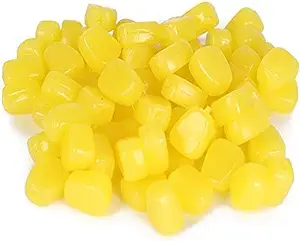
I know, it sounds a bit odd, doesn’t it? But trust me when I say, canned corn kernels have been a secret weapon of mine for a long time, particularly when fishing for stocked trout.
These little morsels have a captivating, bright yellow color and a sweet aroma that trout find hard to resist. It’s quite the sight when you see a trout snap up this unconventional bait.
Using corn kernels as trout bait is incredibly simple. I just crack open a can, drain the liquid, and voila! I have an easy, ready-to-use bait.
When it’s time to bait the hook, I carefully thread two or three kernels onto the hook. You want to make sure the hook is not entirely covered, leaving the point exposed for a successful hook set.
I cannot tell you how many times these humble corn kernels have helped me reel in a beautiful trout. They’re particularly handy when the fish seem uninterested in traditional baits.
They’ve been a game-changer for me and I’m sure they’ll be one for you too. The next time you’re out on a trout fishing trip, don’t forget to throw a can of corn kernels in your tackle box. You’ll thank me later.
Best Corn Kernels:
- Sweetcorn
- Canned Corn
- Flavored Corn (e.g., garlic, strawberry, or tutti-frutti)
- Artificial Corn Baits
- Preserved Corn Baits
Pros & Cons
Pros:
- Cost-effective: Corn kernels are inexpensive and readily available, making them a budget-friendly option for bait.
- Versatile: Can be used for a variety of freshwater fish species, including carp, catfish, and panfish.
- Easy to use: Corn can be quickly threaded onto hooks or used in bait bags without much preparation.
- Long-lasting: Corn stays on the hook well, reducing the need for frequent bait changes during fishing.
Cons:
- Limited effectiveness: While effective for some fish species, corn may not attract as many bites as other baits for certain types of fish.
- Ethical considerations: Some anglers may have concerns about the nutritional value of corn for fish or its impact on their diet.
- Potential regulations: In some areas, using corn as bait may be prohibited or restricted due to environmental concerns or fishing regulations.
- Environmental impact: Discarded corn kernels can attract unwanted pests or contribute to nutrient imbalances in aquatic ecosystems.
Bait No 5. Salmon Eggs
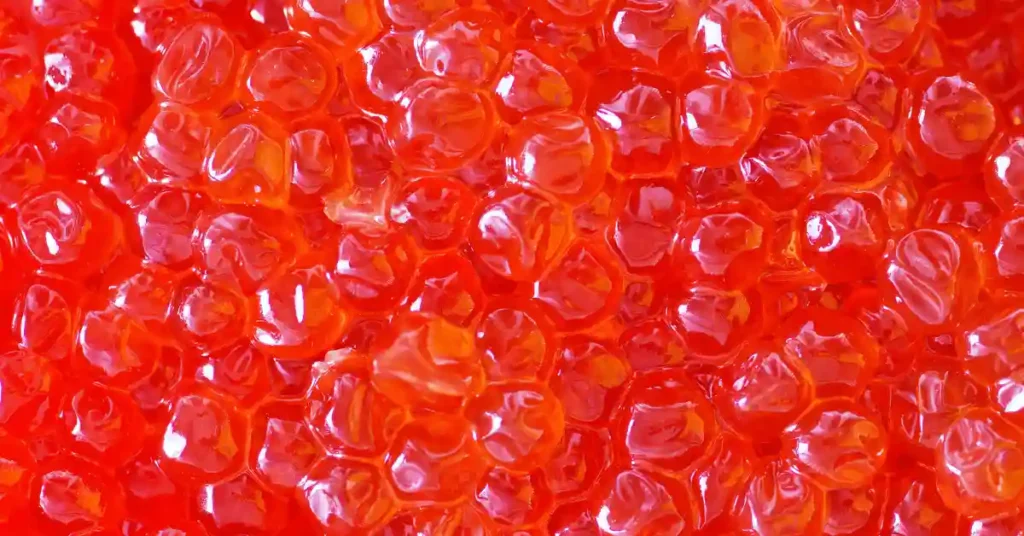
Among the top entries on my list of BEST TROUT BAITS, salmon eggs hold a special place. Believe me, these little red orbs work like a charm when it comes to luring trout.
The potent scent they exude is a siren call for these fish. Trout are simply drawn to the unique aroma and will often bite without hesitation.
Having bass in your meals can Rigging salmon eggs onto your hook is a piece of cake. All you need to do is gently thread one or two eggs onto the hook.
I’m careful to ensure that the hook’s point remains visible. This increases the chances of a successful hook set once the trout takes the bait. Make sure you’re getting all the good stuff your body needs.
It’s also worth noting that salmon eggs are a natural part of a trout’s diet, especially in waters where salmon spawn. This is one of the reasons why they’re so effective.
So, next time you’re getting ready for a trout fishing excursion, make sure to pack a jar of salmon eggs. Trust me, they can be the secret to your trout fishing success.
The beauty of these eggs is that they’re readily available in most tackle shops. You can also get them online, ensuring that you’re never without this effective trout bait.
The look on your fellow anglers’ faces when you reel in a hefty trout using salmon eggs will be priceless! So, give them a try and see the difference they make in your trout fishing plans.
Best Salmon Eggs:
- Atlas-Mike’s Spawn Sac
- Pautzke Bait Co. Fire Balls
- Berkley PowerBait Magnum Power Eggs
- Atlas-Mike’s Jarred Salmon Eggs
- Eagle Claw Salmon Egg Hooks
Pros & Cons
Pros:
- Natural bait: Salmon eggs are a natural and attractive bait for many fish species, particularly trout and salmon.
- High effectiveness: Salmon eggs are highly effective in enticing bites from fish due to their natural scent and appearance.
- Versatility: Can be used in various fishing techniques, including drift fishing, float fishing, and bottom fishing.
- Nutrient-rich: Salmon eggs provide fish with essential nutrients, making them a nutritious bait option.
Cons:
- Fragility: Salmon eggs can be delicate and may require careful handling to keep them intact on the hook.
- Availability: Obtaining fresh salmon eggs can be challenging, especially outside of salmon spawning seasons.
- Legal restrictions: Harvesting salmon eggs may be regulated or prohibited in certain areas to protect fish populations.
- Environmental impact: Overuse or improper disposal of salmon eggs can disrupt natural ecosystems and affect fish populations.
Bait No 6. Crickets and Grasshoppers
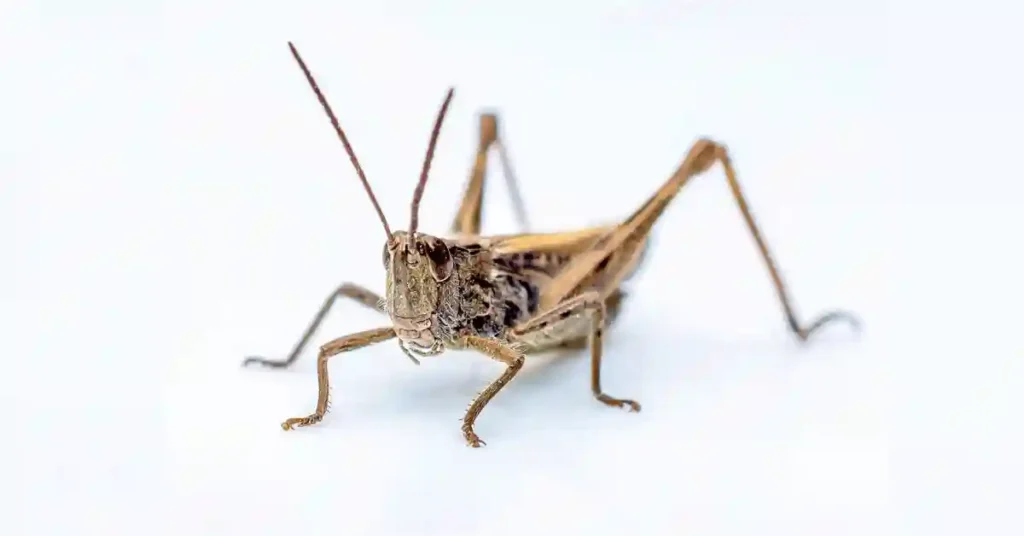
Let me tell you, in the realm of live bait, crickets and grasshoppers have always been a top pick of mine. These little critters are part of a trout’s natural diet, particularly during the late summer months when they’re abundant.
To rig these insects as bait, I hook them through the thorax. This keeps them wriggling and appealing, catching the eye of any curious trout swimming nearby.
One thing I love about using crickets and grasshoppers is their availability. You can catch them in your backyard, local fields, or even purchase them at a bait shop.
Using them brings an authentic and earthy element to your fishing experience that I find quite rewarding.
So, the next time you plan a trout fishing trip, consider catching a few crickets or grasshoppers beforehand. The thrill you’ll get when a trout bites onto this natural bait is simply unbeatable. I can’t wait for you to experience it!
Pros & Cons
Pros:
- Natural bait: Crickets and grasshoppers are natural prey for many fish species, making them an effective and attractive bait.
- High effectiveness: Fish are naturally drawn to the movement and sound of live crickets and grasshoppers, increasing the likelihood of bites.
- Versatility: Can be used in various fishing techniques, including fly fishing, baitcasting, and bottom fishing.
- Availability: Crickets and grasshoppers are often readily available at bait shops or can be easily caught in the wild during warmer months.
Cons:
- Fragility: Live crickets and grasshoppers can be fragile and may require careful handling to keep them alive and active on the hook.
- Limited lifespan: Live bait has a limited lifespan, and crickets and grasshoppers may die quickly, requiring frequent bait changes.
- Seasonal availability: Crickets and grasshoppers may be more challenging to find during colder months when they are less active or dormant.
- Ethical concerns: Some anglers may have ethical concerns about using live insects as bait, preferring alternatives like artificial lures.
You Should Also Read: Why Shouldn’t you Eat Bass.
Bait No 7. Spinners and Spoons

In my vast experience of trout fishing, I’ve discovered that spinners and spoons are among the most successful artificial baits you can use. What makes these baits stand out are their movements and flashes, which imitate small fish swimming in the water.
This simulation triggers the predatory instincts of trout, making them more likely to strike.
Personally, I’ve seen a significant amount of success with silver and gold spinners and spoons. The reflective surfaces of these baits sparkle in the water, effectively catching the attention of trout.
Each time I cast one of these into the water, I can’t help but feel a thrill of anticipation as I wait for the tell-tale tug of a trout on the line.
One piece of advice I’d like to share is to vary the speed of your retrieval when using spinners and spoons. Sometimes a faster retrieval can mimic a fleeing fish, enticing a chase from a trout. At other times, a slower pace may be more tempting as it resembles a wounded or easy prey.
You’ll be amazed at the versatility and effectiveness of spinners and spoons. Once you start using them, I’m sure they’ll become a staple in your tackle box just like they are in mine.
Now go ahead, cast your line, and watch as these fantastic lures bring the trout right to you.
Best Spinner:
- Rooster Tail Spinner
- Mepps Aglia Spinner
- Panther Martin Spinner
- Blue Fox Vibrax Spinner
- Worden’s Original Rooster Tail Spinner
Best Spoons:
- Daredevil Spoon
- Acme Kastmaster Spoon
- Johnson Silver Minnow Spoon
- Mepps Aglia Spoon
- Blue Fox Vibrax Spoon
Pros & Cons
Pros:
- Attractive action: Spinners and spoons create enticing movements and vibrations in the water, attracting the attention of predatory fish.
- Versatility: Suitable for various fishing techniques, including casting, trolling, and jigging, making them versatile options for anglers.
- Durable: Constructed from sturdy materials like metal or plastic, spinners and spoons can withstand repeated use without losing effectiveness.
- Long casting distance: Spinners and spoons are designed to be aerodynamic, allowing anglers to cast them long distances to reach distant fish.
Cons:
- Skill required: Effective use of spinners and spoons requires proper technique and understanding of fish behavior, which may take practice to master.
- Cost: Quality spinners and spoons can be more expensive than other types of fishing lures, especially those made from premium materials.
- Snagging risk: Spinners and spoons can easily get caught on underwater obstacles like rocks or weeds, leading to lost lures.
- Limited realism: While effective, spinners and spoons may not perfectly imitate the appearance or behavior of natural prey, potentially reducing their effectiveness in certain conditions.
Bait No 8. Shrimp and Prawns
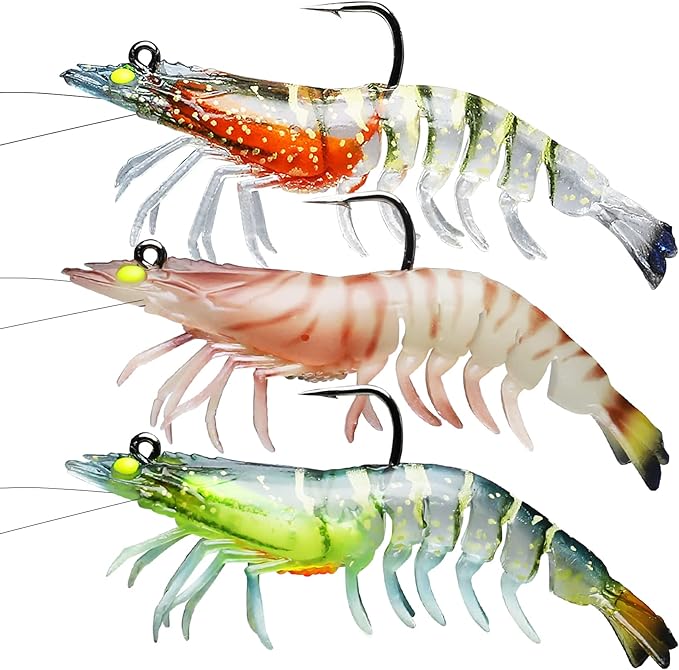
Surprised to see shrimp and prawns on my list of top trout baits? Trust me, I was too when I first discovered their effectiveness.
Despite not being a typical trout bait, these tasty crustaceans have a unique aroma and flavor that trout seem to love. I’ve found that both freshwater and saltwater shrimp can work wonders in enticing these elusive fish.
When it comes to hooking these baits, I like to keep it simple. A small piece of shrimp or prawn threaded onto the hook is all it takes.
I make sure not to cover the hook completely, leaving the point exposed for a solid hook set. The key here is to use small pieces – something that a trout can easily bite and get hooked on.
What I particularly like about using shrimp and prawns is that they’re widely available and easy to store. You can find them in most supermarkets or fishing bait shops, and they last for a good amount of time if kept refrigerated.
Now, I encourage you to give shrimp and prawns a try on your next trout fishing adventure. You might be as pleasantly surprised as I was at their effectiveness.
Just remember, the aim is to make your bait offering as enticing and natural-looking as possible to the trout. Good luck, and may your line always be tight!
Pros & Cons
Pros:
- Natural bait: Shrimp and prawns are natural prey for many saltwater and freshwater fish species, making them highly attractive to fish.
- Realistic appearance: Shrimp and prawn baits closely resemble the natural prey of fish, increasing their effectiveness in enticing bites.
- Versatility: Can be used in various fishing techniques, including bottom fishing, drift fishing, and lure fishing, making them versatile options for anglers.
- Nutrient-rich: Shrimp and prawns provide fish with essential nutrients, making them a nutritious bait option.
Cons:
- Fragility: Fresh or live shrimp and prawns can be delicate and may require careful handling to keep them intact on the hook.
- Availability: Obtaining fresh or live shrimp and prawns can be challenging, especially for anglers who do not have access to coastal or freshwater habitats where they are abundant.
- Cost: Fresh or live shrimp and prawns can be more expensive than other types of bait, particularly if they need to be purchased from bait shops or seafood markets.
- Environmental impact: Overharvesting of shrimp and prawns for use as bait can disrupt natural ecosystems and affect fish populations.
Bait No 9. Soft Plastics
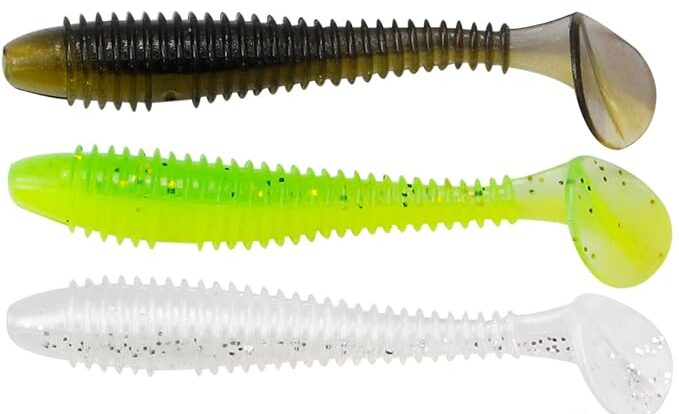
Let me tell you, the last entry on my list of top trout baits is one that brings versatility to your fishing game – soft plastics. The beauty of these lures lies in their uncanny ability to emulate a trout’s natural prey, be it worms, bugs, or even small fish.
You see, the realistic movement and appearance of these baits can often deceive the smartest of trout.
Choosing the right soft plastic for your trout fishing depends on the kind of prey the trout in your area are accustomed to.
You need to play the observant angler and understand their preferences. This is part of the charm for me, understanding the trout’s diet and using it to my advantage.
From my experience, I can tell you that using soft plastics demands a bit of finesse. You want your lure to move naturally in the water, imitating the movements of the trout’s prey.
Trust me, getting this right can be incredibly rewarding as you watch a trout fall for your bait.
So, on your next trout fishing trip, arm yourself with a variety of soft plastics. Play around with them, see what works best for the trout in your fishing spot.
There’s a certain thrill to fooling a trout with these ingenious lures. I can’t wait for you to experience it!
Pros & Cons
Pros:
- Lifelike appearance: Soft plastics are often designed to closely mimic the appearance and movement of natural prey, making them highly attractive to fish.
- Versatility: Soft plastics come in a wide range of shapes, sizes, and colors, allowing anglers to match the hatch and target various fish species in different fishing conditions.
- Durable: Made from flexible materials like silicone or rubber, soft plastics can withstand multiple strikes from fish without losing effectiveness.
- Weedless options: Some soft plastics are designed with weedless rigs, allowing anglers to fish in areas with heavy vegetation or cover without getting snagged.
Cons:
- Skill required: Effective use of soft plastics requires proper rigging techniques and understanding of fish behavior, which may take practice to master.
- Cost: Quality soft plastics can be more expensive than other types of fishing lures, especially those made from premium materials.
- Environmental impact: Lost or discarded soft plastics can contribute to plastic pollution in waterways, harming aquatic life and ecosystems.
- Limited scent: Soft plastics do not naturally emit scent like live bait, potentially reducing their effectiveness in enticing bites, especially in murky water or low-light conditions.
Final Thoughts: Choose Your Best Trout Bait and Reel in the Trout
Now that you have been introduced to the top 9 baits for trout fishing in rivers, it’s time to hit the water and put your newfound knowledge to the test.
Each bait offers a unique presentation and appeal that can entice trout to bite. Remember to adjust your techniques and bait selection based on the specific river conditions and the preferences of the trout you are targeting.
So grab your favorite bait, rig up your fishing gear, and head to your favorite trout river. With the right bait and some patience, you’ll have a great chance of landing some beautiful trout. Good luck and tight lines!
Disclaimer: Fishing regulations may vary by location, so always check the local rules and regulations before fishing. Practice catch-and-release whenever possible to ensure the sustainability of trout populations.

Meet Ibrahim Khan, an avid angler and author in Fishing Teach. He shares his wealth of knowledge from his 16 years of experiences in fishing. His articles are a captivating blend of practical insights and thrilling tales that invite readers into the enchanting world of fishing.
Ibrahim’s guides are your go-to guide in the realm of fishing on this informational site. Hailing from a coastal paradise, Ibrahim’s passion for angling is the heartbeat of his life.
